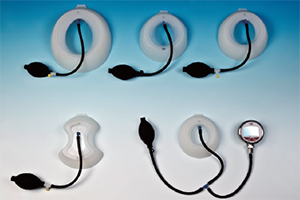Vacuum bell therapy
Abstract
Background: For specific therapy to correct pectus excavatum (PE), conservative treatment with the vacuum bell (VB) was introduced more than 10 years ago in addition to surgical repair. Preliminary results using the VB were encouraging. We report on our 13-year experience with the VB treatment including the intraoperative use during the Nuss procedure and present some technical innovations.
Methods: A VB with a patient-activated hand pump is used to create a vacuum at the anterior chest wall. Three different sizes of vacuum bells, as well as a model fitted for young women, exist. The appropriate size is selected according to the individual patient’s age and ventral surface. The device should be used at home for a minimum of 30 minutes (twice a day), and may be used up to a maximum of several hours daily. The intensity of the applied negative pressure can be evaluated with an integrated pressure gauge during follow-up visits. A prototype of an electronic model enables us to measure the correlation between the applied negative pressure and the elevation of the anterior chest wall.
Results: Since 2003, approx. 450 patients between 2 to 61 years of age started the VB therapy. Age and gender specific differences, depth of PE, symmetry or asymmetry, and concomitant malformations such as scoliosis and/or kyphosis influence the clinical course and success of VB therapy. According to our experience, we see three different groups of patients. Immediate elevation of the sternum was confirmed thoracoscopically during the Nuss procedure in every patient.
Conclusions: The VB therapy has been established as an alternative therapeutic option in selected patients suffering from PE. The initial results up to now are encouraging, but long-term results comprising more than 15 years are so far lacking, and further evaluation and follow-up studies are necessary.
Cover






